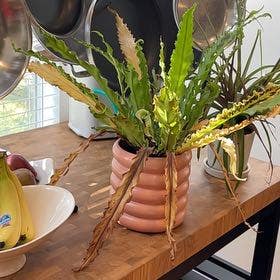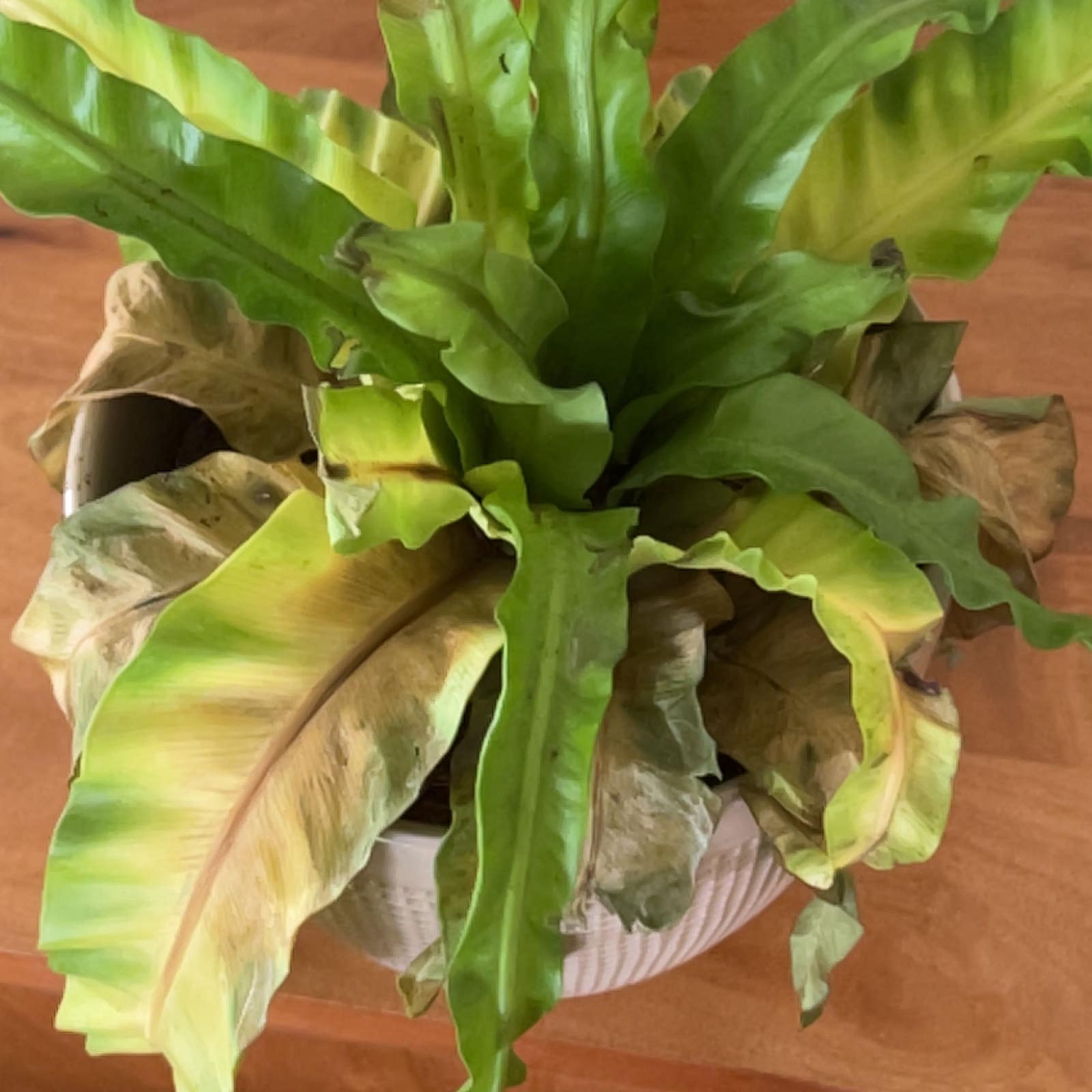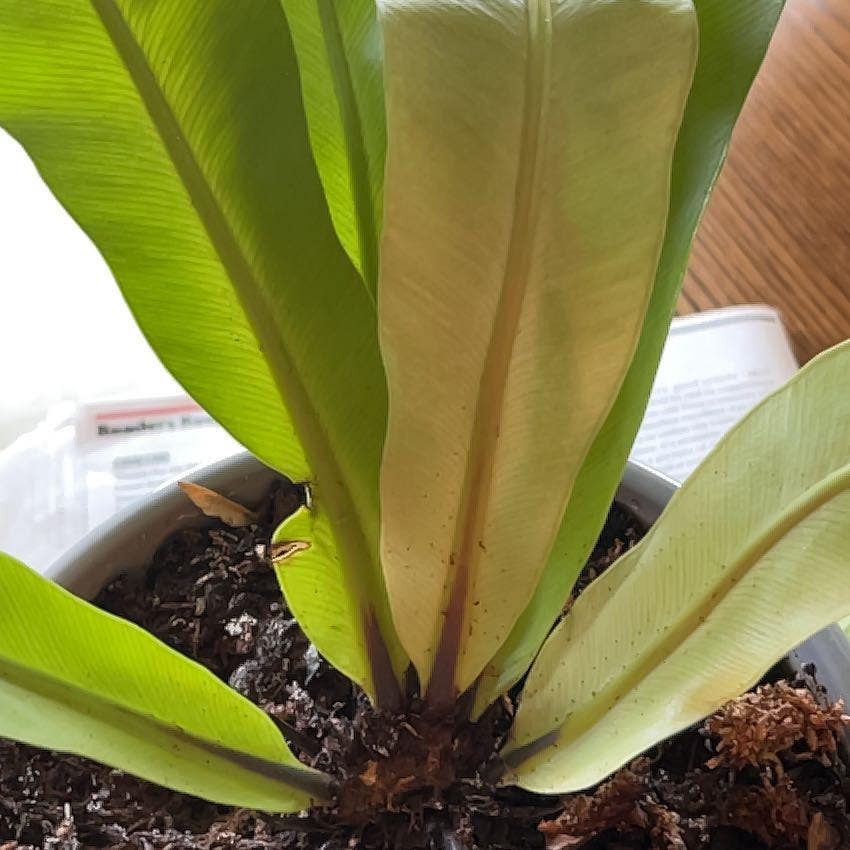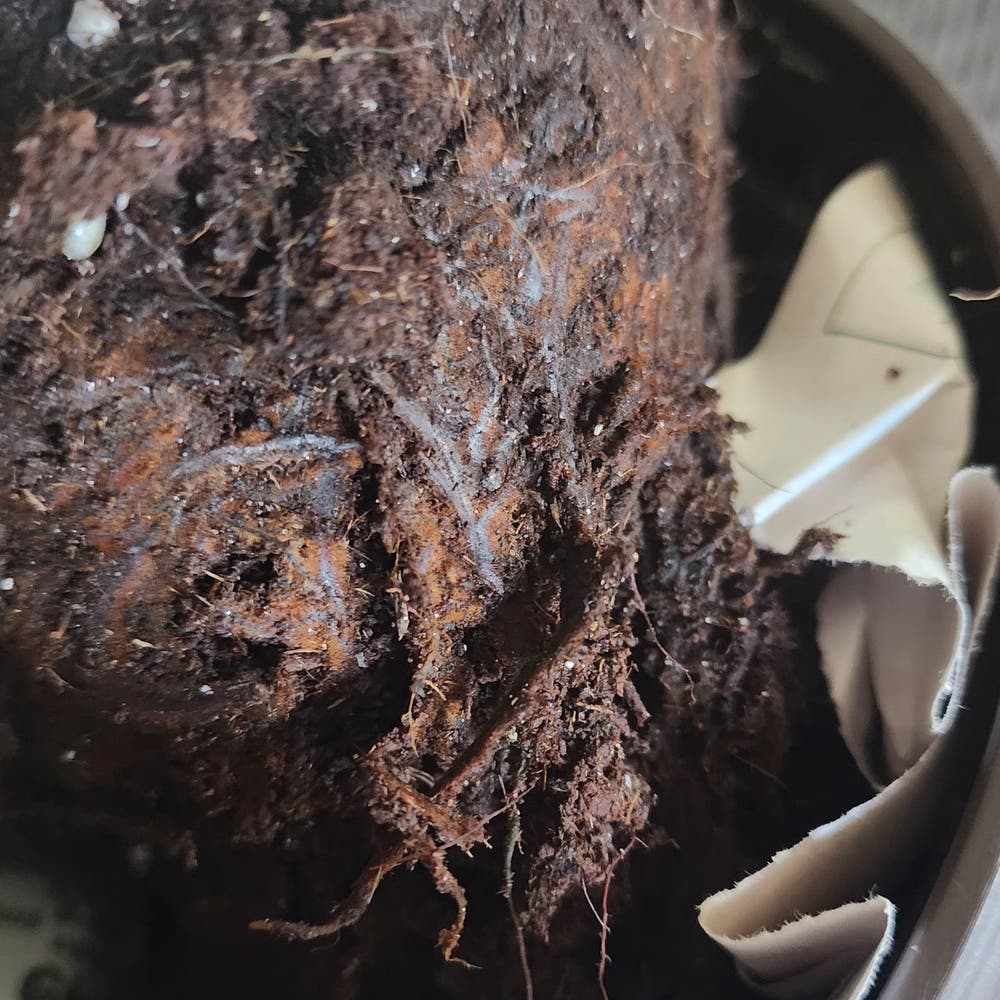🐦 Why Are My Bird's Nest Fern Leaves Turning Yellow?
Dec 14, 2023•5 min read
Revive your yellowing Bird's Nest Fern 🌿 and bring back its vibrant green glory with expert tips.
- 🌿 Yellow leaves signal distress in Bird's Nest Ferns, needing immediate attention.
- 💧🌞 Balance light and water to prevent and treat yellowing.
- 🌡️🐛 Temperature, humidity, pests, and diseases also contribute to yellowing.
Signs of Healthy Leaves
In the lush world of houseplants, the Bird's Nest Fern stands out with its glossy, apple-green fronds that arch with grace. Healthy leaves boast a vibrant color, a crisp texture, and unfurl from the plant's central rosette, resembling a bird's nest.
🌿 What to Look For
Brightness and pliability are your fern's way of saying 'all is good.' The leaves should feel supple, not brittle, and display a uniform green without any unsightly spots.
💛 Yellowing: A Warning Sign
Yellowing leaves, however, are the plant's SOS. It's a stark contrast to the deep green of a happy fern, often starting at the tips or edges and indicating distress. Whether it's a cry for more water, less sun, or a plea for better humidity, yellow leaves mean it's time to play plant detective.
🕵️ The Culprits
Overexposure to light turns leaves pale and sickly, while inconsistent watering can lead to a yellow-brownish tinge. Your fern's not fussy, but it does have standards. Too much direct sunlight? Expect a bleached look. Too little water? The edges will crisp up like autumn leaves.
🌱 Keeping It Real
Remember, a Bird's Nest Fern thrives on balance. It's a bit of a Goldilocks – not too much sun, not too little water, just the right amount of care. Keep it real and your fern will keep it green.

Common Causes of Yellowing Leaves
💡 Insufficient Light
Bird's Nest Ferns are shade lovers, but there's a limit. Too little light starves them of the energy they need, leading to a pale and yellow wardrobe change. Indirect light is their jam; think bright but not direct, like the light for reading a good book without the glare.
🚰 Overwatering or Underwatering
It's a classic watering waltz; one step over, two steps under. Overwatering suffocates roots, while underwatering leaves them thirsty. Consistency is key—aim for soil that's like a wrung-out sponge, moist but not dripping.
🍽️ Poor Drainage and Root Health
Think of roots like lungs—they need air to breathe. Without good drainage, roots drown, and yellow leaves are their SOS signal. Use a potting mix that's like a well-structured city, with plenty of space for air and water to move freely.
🌞 Temperature and Humidity Stress
Bird's Nest Ferns don't appreciate the "hot and cold" treatment. Extreme temperature swings and dry air are as stressful as a Monday morning without coffee. Aim for steady temperatures and a humidifier might just become your fern's best friend.
🛡️ Pests and Diseases
Unwanted guests like mealybugs or fungal infections are the party crashers of the plant world. They'll turn leaves yellow faster than a banana left in the sun. Regular inspections and a gentle wipe-down with soapy water can keep these pests from crashing the chlorophyll party.

Specific Treatments for Yellowing Leaves
In tackling the yellowing leaves of your Bird's Nest Fern, specificity is your ally. Here's how to zero in on the cause and apply the right fix.
💡 Insufficient Light
Boosting light exposure can reverse chlorosis. Move your fern closer to a window, but avoid direct sunlight. If it's too shady, consider grow lights to supplement.
🚰 Overwatering or Underwatering
For water woes, stick your finger into the soil. If it's soggy, ease up on the watering. Bone dry? Time for a thorough soak. Aim for consistently moist, not wet, soil.
🍽️ Poor Drainage and Root Health
Repotting may be necessary. Choose a pot with drainage holes and a well-draining potting mix. Trim any rotten roots to encourage healthy growth.
🌞 Temperature and Humidity Stress
Keep your fern away from drafts and fluctuating temperatures. Use a humidifier or misting to maintain high humidity, mimicking its natural rainforest habitat.
🛡️ Pests and Diseases
Inspect for pests; treat with insecticidal soap or neem oil if needed. For diseases, remove affected leaves and improve air circulation around the plant.
🏜️ Nutrient Deficiency
Yellow leaves might signal hunger. Feed your fern a balanced, water-soluble fertilizer, but don't overdo it—too much can harm as much as too little.
Remember, it's about listening to your plant's needs and responding with precision. No guesswork—just targeted, effective care.

Remedial Measures
🌞 Adjusting Light Conditions
Bird's Nest Ferns are like indoor sunbathers—they love bright, indirect light. If your fern's leaves are turning yellow, it might be throwing shade at your current lighting setup. Place it near an east-facing window or a few feet from a north or west-facing window, but shield it from harsh direct sun with a sheer curtain. Gradually move your fern closer to the light source if it's looking a bit pale, but do it slowly to prevent a full-blown plant tantrum.
🚰 Correcting Watering Practices
When it comes to watering, think of your Bird's Nest Fern as a Goldilocks—conditions need to be just right. The soil should be consistently moist, but never soggy. Stick your finger in the top inch of soil; if it's dry, it's time to water. If it's damp, give it a break. Remember, overwatering is the fast track to root rot, so ensure excess water can escape by using a pot with drainage holes.
🍽️ Improving Soil Drainage and Root Health
Speaking of root rot, let's not go there. To keep your fern's feet dry, use a well-draining potting mix. A mix of peat moss, perlite, and orchid bark will do the trick. If you suspect the roots are already on the dark side, it's time for some surgery. Gently repot your fern, trimming away any mushy or blackened roots, and give it a fresh start in new soil.
🌡 Managing Temperature and Humidity
Your fern is a bit of a diva when it comes to temperature and humidity. It craves stability and moisture in the air. Keep the room between 60-75°F and consider a humidifier or a pebble tray to up the humidity game. If you see your fern's leaves crisping up like bacon, it's begging for more moisture—don't make it beg.
Remember, your Bird's Nest Fern isn't just a plant; it's a living piece of decor that demands attention. Treat it right, and it'll be your frond to the end.


